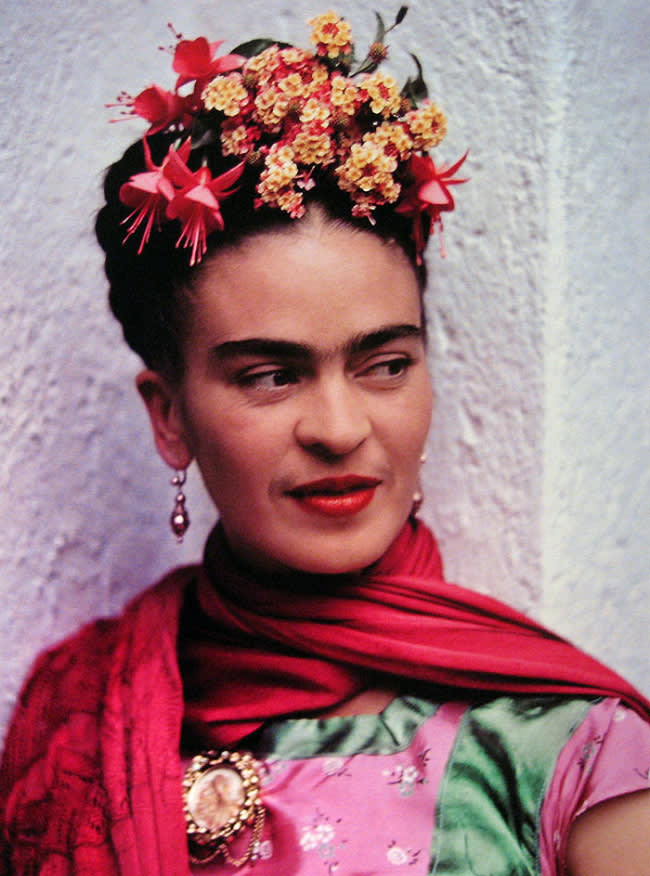Frida Kahlo: Appearances Can Be Deceiving

Frida in New York
Photograph by Nickolas Muray, 1946
In an age when technology and connectivity are so closely aligned with culture, artists have grown to achieve new levels of celebrity and fame, sometimes even surpassing that which their work merits. Many can attribute Andy Warhol and Salvador Dali as the earliest and most noteworthy examples of this contemporary phenomenon, but truth be told, it was perhaps Frida Kahlo who pioneered this notion of artist-as-celebrity.

Frida Kahlo & Salvador Dalí
Throughout her brief, albeit wildly highly influential career, Kahlo’s main subject remained herself - creating a profound connection between her work as a painter and her trademark visage. Kahlo’s self portraits explored questions of race and identity, while allowing the Mexican born artist the opportunity to project a carefully constructed representation of herself for the world to see. While the breadth of Kahlo’s influence as an early 20th century female artist lies undisputed, the latest exhibition honoring Kahlo’s life and career focuses on the unique elements of the iconic painter’s instantly recognizable style that became an integral part of her identity.

Frida Kahlo
Frida Kahlo in Tehuana Dress
In ‘Frida Kahlo: Appearances Can Be Deceiving,’ now open at the Brooklyn Museum, Kahlo’s clothing and personal possessions are presented alongside important paintings, drawings and photographs, serving as necessary vehicles to better understand her private life and work.
Rediscovered in 2004 after being locked away since Kahlo’s death in 1954, these personal artifacts range from a selection of contemporary and pre-colonial jewelry – denoting her love of bodily adornment – as well as Kahlo’s famed Tehuana clothing and custom shoes, all of which were designed by the artist and handmade.

Frida Kahlo with Diego Rivera and Gas Mask
Nickolas Muray, 1939
Following a horrific bus accident as a young girl, Kahlo struggled her entire adult life with deteriorating health and overall wellbeing. Even in moments of immense sorrow, Kahlo spent her days in bed adorning her braces and prosthetics, as well as hand-painting corsets with politically activated imagery, further blurring the lines between her life and work.

Frida Kahlo at home
Despite her reclusive lifestyle, rarely leaving the Coyoacán home she shared with husband Diego Rivera, Kahlo kept a pulse on 20th century culture. Favoring perfume by Schiaparelli and Chanel, Kahlo took deep pride in her collection of makeup, often using Revlon products and dark lipsticks to fashion her daily appearance much as she did in her portraits.
Based on a 2012 exhibition at the Frida Kahlo Museum in Mexico, ‘Frida Kahlo: Appearances Can Be Deceiving’ draws masterful connections between the personal possessions and professional work of Mexico’s greatest female painter; a must see exhibition for art and fashion lovers looking to better understand the history and life of Frida Kahlo.



